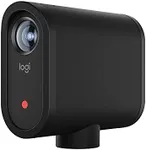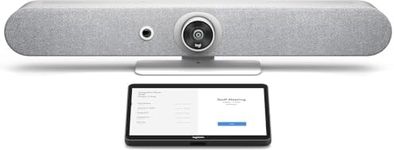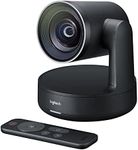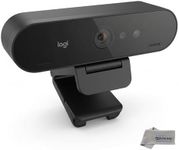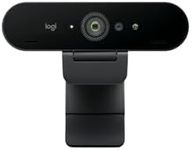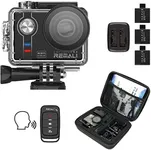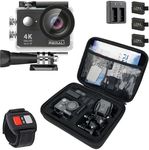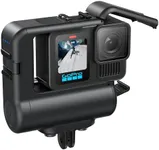Buying Guide for the Best Logitech Webcams
Choosing the right webcam can significantly enhance your video calling, streaming, or recording experience. When selecting a webcam, it's important to consider various specifications that will impact the quality and functionality of the device. Understanding these key specs will help you make an informed decision based on your specific needs and preferences.ResolutionResolution refers to the number of pixels that the webcam can capture, which directly affects the clarity and detail of the video. Common resolutions include 720p (HD), 1080p (Full HD), and 4K (Ultra HD). If you need a webcam for casual video calls, 720p might be sufficient. For professional streaming or recording, 1080p or 4K would provide better quality. Higher resolution webcams are ideal for users who prioritize sharp and detailed video.
Frame RateFrame rate, measured in frames per second (fps), determines how smooth the video appears. Standard frame rates are 30fps and 60fps. A higher frame rate results in smoother motion, which is particularly important for gaming, streaming, or any activity involving fast movements. For general use, 30fps is usually adequate, but if you need fluid motion for professional purposes, opt for 60fps.
Field of ViewField of view (FOV) indicates the width of the area that the webcam can capture. It is measured in degrees, with common values being 60°, 78°, and 90°. A wider FOV allows more of the background or multiple people to be included in the frame. If you are using the webcam for solo video calls, a narrower FOV might be sufficient. For group calls or capturing more of your environment, a wider FOV is beneficial.
AutofocusAutofocus ensures that the webcam automatically adjusts to keep the subject in sharp focus. This feature is important for maintaining clear video quality, especially if you move around or change the distance from the camera. If you plan to use the webcam for dynamic activities or presentations, autofocus is a valuable feature. For stationary use, manual focus might be acceptable.
Low Light PerformanceLow light performance refers to the webcam's ability to produce clear video in dim lighting conditions. This is crucial if you often use the webcam in poorly lit environments. Look for webcams with features like low light correction or HDR (High Dynamic Range) to ensure good video quality in various lighting situations. If you have a well-lit setup, this spec might be less critical.
Microphone QualityMicrophone quality affects the clarity and volume of the audio captured by the webcam. Some webcams come with built-in stereo or noise-canceling microphones, which can enhance audio quality. If you need clear and crisp audio for video calls or recordings, pay attention to the microphone specs. For users who already have a separate microphone, this spec might be less important.
CompatibilityCompatibility refers to whether the webcam can easily connect and work with your computer or device. Most webcams are compatible with Windows, macOS, and other operating systems, but it's important to check. Ensure that the webcam supports the software and applications you plan to use. If you use multiple devices, look for a webcam with broad compatibility.
Mounting OptionsMounting options determine how you can position the webcam. Common options include clip-on mounts for monitors, tripods, and flexible stands. Consider where and how you plan to use the webcam. If you need a stable and adjustable setup, look for webcams with versatile mounting options. For simple setups, a basic clip-on mount might be sufficient.
